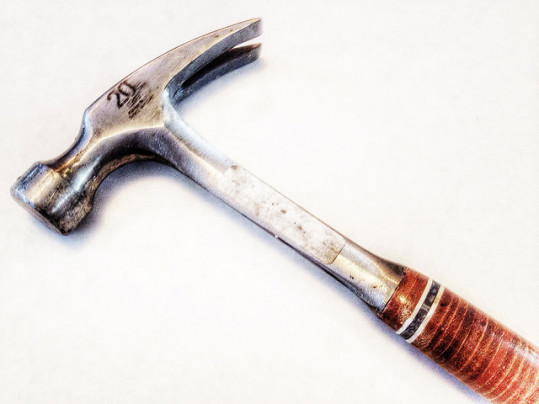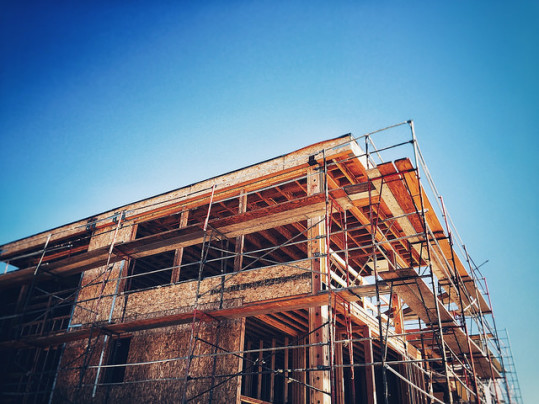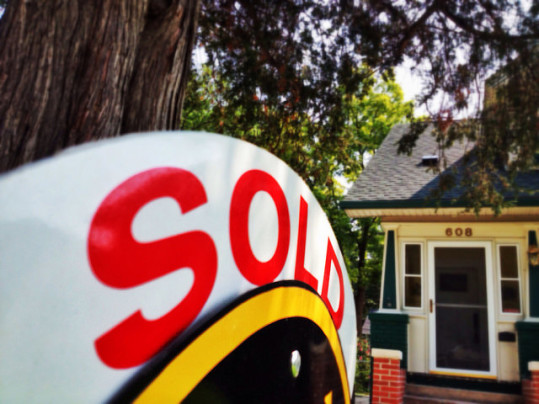New home construction is an important indicator of the health of the housing market. In fact, taking note of how many new houses are being built in your area is one way of determining whether or not your local market is strong. For that reason, each month’s New Residential Construction report – released jointly by the U.S. Census Bureau and the Department of Housing and Urban Development – is watched closely by both economists and real estate analysts. According to the most recent release, the number of new single-family homes that began construction during the month of August fell 3 percent from the month before. But, despite the drop, housing starts remain above a one million-unit pace for the fifth consecutive month. In addition, the number of permits authorized to build new single-family homes, which is a good indicator of future housing starts, rose 2.8 percent from the month before. And, because they’re an indication of future home construction, a rise in building permits points to a coming rebound in construction and continued strength in the new home market through the end of the year. More here.
Archive for September 2015
Builder Confidence Hits 10-Year High
Builders have a pretty good view of where the new home market is headed and, because of this, the National Association of Home Builders polls them each month to get their perspective. The survey has been conducted for 30 years and asks builders to rate buyer traffic, current sales conditions, and expectations for the next six months. In September, NAHB’s Housing Market Index rose another point and hit its highest level since October 2005. The index – which is measured on a scale where any number above 50 indicates more builders view conditions as good than poor – increased to 62 for the month. David Crowe, NAHB’s chief economist, said the results indicate that the new home market should continue to improve through the end of the year. “NAHB is projecting about 1.1 million total housing starts this year,” Crowe said. “Today’s report is consistent with our forecast, and barring any unexpected jolts, we expect housing to keep moving forward at a steady, modest rate through the end of the year.” Of the three components, those measuring buyer traffic and current sales conditions each moved up slightly, while the index gauging expectations for the next six months dropped two points. More here.
Survey Finds Mortgage Rates Down Slightly
According to the Mortgage Bankers Association’s Weekly Applications Survey, average mortgage rates were relatively flat last week. There were slight declines in rates on 30-year fixed-rate mortgages with conforming balances, loans backed by the Federal Housing Administration, and 15-year fixed-rate loans. Loans with jumbo balances, on the other hand, ticked up from the week before. Despite favorable rates, however, demand for mortgage applications fell from the week before. In fact, refinance demand was down 9 percent and purchase application demand – which is a good indicator of future home sales – was down 4 percent. Michael Fratantoni, MBA’s chief economist, told CNBC that the Fed’s anticipated rate hike – which may’ve played a role in declining demand – may not come as soon as some have expected. “Given recent economic growth and job market health, we had been expecting a September rate hike,” Fratantoni said. “However, given recent financial market volatility and global growth concerns, along with still-low US inflation, we are expecting the first rate hike to be moved to December 2015.” The MBA’s weekly survey has been conducted since 1990 and covers 75 percent of all retail residential mortgage applications. More here.
Potential Rate Hike Won’t Derail Housing
For months, speculation that the Federal Reserve would begin to raise interest rates has loomed over the housing market. The rumored rate hike has spurred some potential buyers to enter the market earlier than they may’ve planned but it’s also led many to theorize that higher mortgage rates would doom the housing market’s recent progress. According to a survey conducted by Reuters of 22 top economists, however, the housing market is now strong enough to endure a gradual increase in mortgage rates. In fact, all but two of the 22 said they felt rising rates would not hamper sales, citing job creation and growing demand for houses among younger buyers as reasons demand would not be affected. “The recent strength of housing activity suggests the market is well placed to cope with a gradual rise in interest rates,” Capital Economics economist, Matthew Pointon, told Reuters. “Rising rates will also be accompanied by an improving labor market and gradually loosening of credit conditions.” In addition, the surveyed economists felt home price increases wouldn’t be big enough to discourage first-time home buyers but will be enough to encourage current homeowners to put their homes up for sale, which could help address current inventory issues in many markets across the country. More here.
September May Be Best For Buyers
Spring and summer are known to be the hottest times of year for home shoppers and sellers. But, according to a recent article from Realtor.com’s chief economist, Jonathan Smoke, September may actually be the best month for buyers to sign a contract to buy a house. Smoke says prospective buyers will find more choices and less competition if they’re looking to buy now. “Normally inventory peaks in August and begins to slow as the nights grow longer,” Smoke says. “But this year the typical seasonal decline will start a bit later. There will be more choices in September than any other month in 2015.” And, since the school year has started, overall demand will be down, which means prospective buyers will have less competition than they would earlier in the year. Also, fewer buyers and more homes available for sale means upward pressure on prices will start to ease, giving potential buyers an edge. Finally, Smoke argues that now is the best time to buy because mortgage rates remain historically low, which makes affordability conditions even more favorable for prospective buyers. More here.
Climbing Prices Top List Of Buyer Concerns
Buying a home requires a little forethought. It is, after all, the largest purchase most people will ever make. So thinking things through before taking the plunge is always a good idea. But what issues weigh most heavily on the minds of potential home buyers? According to a recently released survey, today’s buyers are most concerned about rising home prices. In fact, nearly 27 percent of respondents named affordability their biggest concern – with too much competition from other buyers running a distant second at 17 percent. The results highlight a change from last year. Although prices, competition, and inventory retain their hold on the top three positions, rising mortgage rates have fallen from the top five and were named by just 5 percent of participants. Still, despite fewer worries about a spike in mortgage rates, a growing number of home buyers have legitimate concerns about price increases, especially first-time home buyers. Among first-time buyers, 31 percent named prices their top concern. On the other hand, some issues that may have ranked higher in the past appear to have receded from buyers’ minds. For example, worries about the economy and job security, difficulty getting a loan, and confusion about the buying process were each named by just 3 percent of prospective buyers. More here.
Majority Of Recently Sold Homes Affordable
During the second quarter of this year, 63.2 percent of the new and existing homes sold were affordable to families earning the U.S. median income of $65,800, according to the National Association of Home Builders Housing Opportunity Index. And though that’s down from 66.5 percent in the first quarter, David Crowe, NAHB’s chief economist, says conditions are still favorable. “Though affordability edged slightly lower in the second quarter, the HOI remains well above 50, where half the households can afford half the homes sold,” Crowe said. “Low mortgage rates, pent-up demand and continued job growth should contribute to a gradual, steady rise in housing throughout the year.” The slight drop in affordability is largely due to the fact that home prices continue to rise. In fact, the national median home price increased from $210,000 in the first quarter to $230,000 in the second quarter. On the other hand, average mortgage rates actually moved lower during the same period, which should help offset some of the effects of continued price gains. More here.







